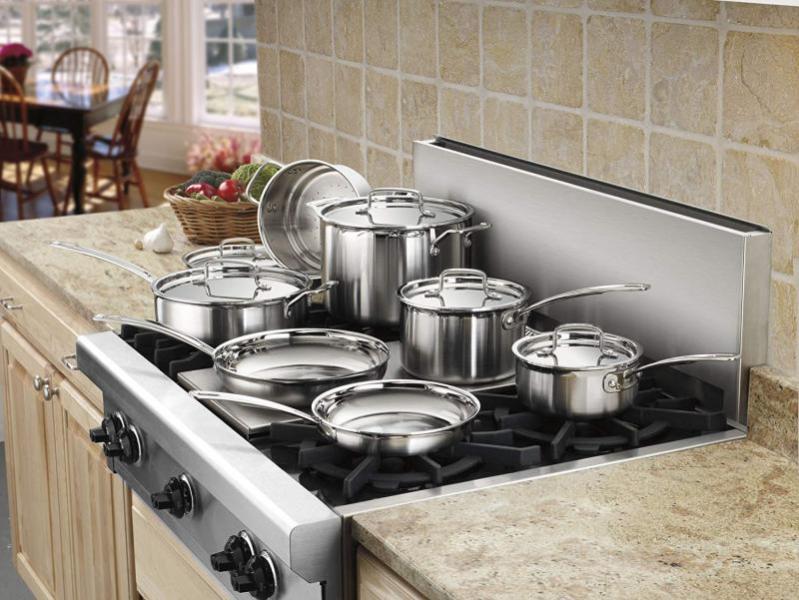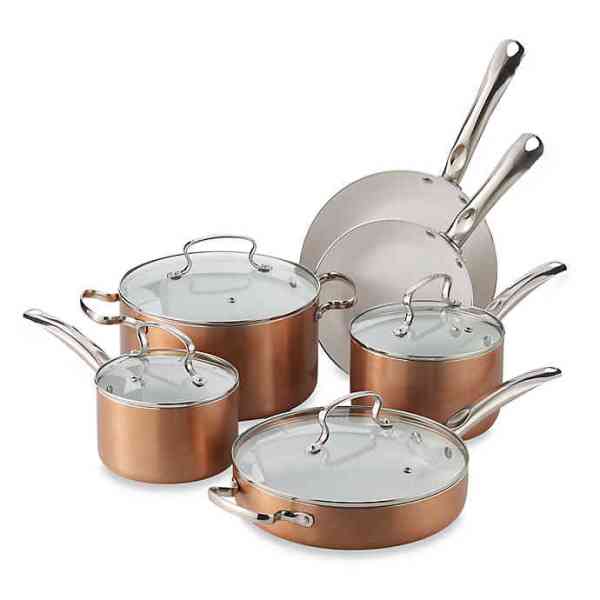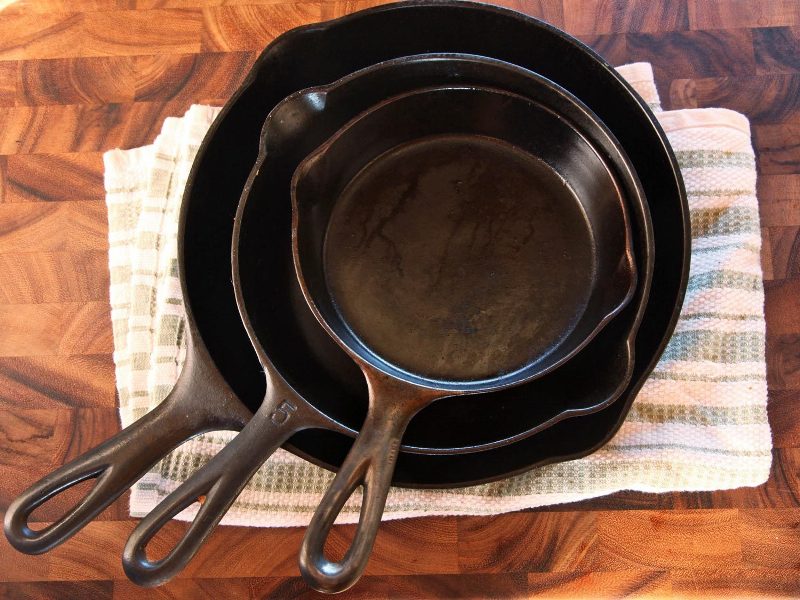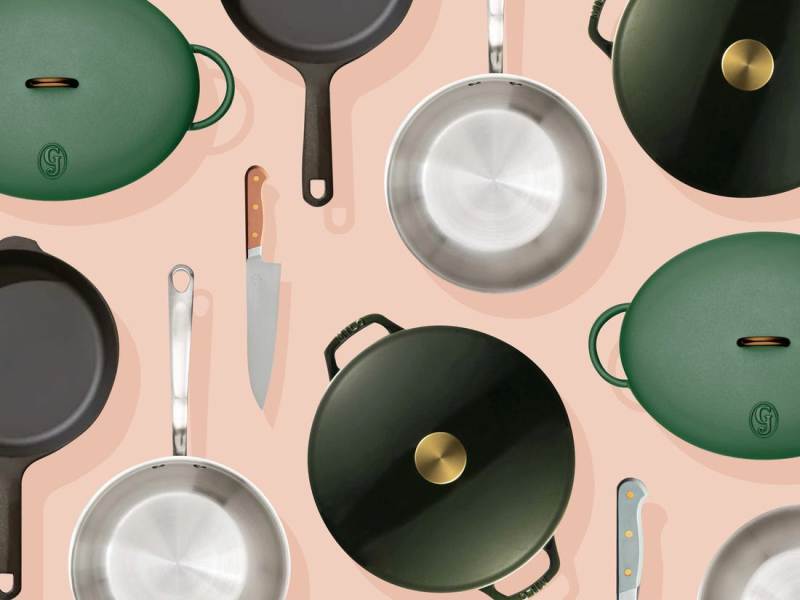Investing in kitchenware is a decision that many people do on a whim when they should be paying attention. While all the craze is around eating healthy and how many calories we’re eating, a lot of people don’t know how important what they’re cooking with is.
When you consider that most of your cooked food will go through the same cookware, it begins to make more sense to pay attention to what they’re made of. Understanding what your cookware is made of can also inform your decision on food-specific wares.
If you’re looking to cook commercially, then the nature of your cookware should be a bigger source of concern for you. Commercial kitchens will likely have to fabricate brand-new cookware to meet their exact specifications, as opposed to ordering pre-fab units.
Fabricating new cookware units will typically require outsourcing to an industrial fabrication company like Craftsmen Ind, where you’ll have to discuss the metal of choice. While a fabrication company will be best-placed to give advice based on your exact needs, it’s always better to go into those conversations informed.
Before ordering or fabricating cookware, there are a couple of things to keep in mind:
- Durability: This is indicated by the material’s resistance to corrosion and damage.
- Safety: This refers to the chemical safety of the material, i.e., no toxic chemicals are produced during cooking or at high temperatures.
- Ease of cleaning: A smooth surface often guarantees this.
- Ability to withstand repeated washing
While these are primary concerns of all kitchenware manufacturers, it’s essential to know that not all materials are created equal. As you’ll soon see, the efficacy of material typically depends on the process it’s to be used for. Here are the five most common cookware materials and their applications:
Stainless Steel

Stainless steel is probably the most common material used for fabrication in the food industry, and for a good reason, too. Typically made of iron and chromium, its primary strength is its durability. Stainless steel can undergo a huge amount of stress without taking significant damage. There are two categories of stainless steel commonly used in food services. The materials are categorized by the Society of Automotive Engineers (SAE).
The two common SAE grades are:
- 300 series: Typically made with chromium and nickel. They can be identified by their non-magnetism and have high resistance to reactions with food chemicals.
- 400 series: Produced using chromium, nickel, and other elements. One significant difference in the makeup is the nickel content, which is typically much less than in the
- 300 series. They are magnetic, and also withstand corrosion better than the 300 series.
Advantages of Stainless Steel Cookware
- They are typically non-reactive and help maintain the food flavor.
- They are durable and can withstand long-term use.
- They are hygienic since they don’t trap food or bacteria.
Disadvantages of Stainless Steel Cookware
- Non-stick varieties might require some effort to clean because of food sticking to the surface.
- It requires a long heat-up time.
- Heat distribution is typically inconsistent.
Should you need to season stainless steel pans? It depends. In order to create a smooth, more non stick surface, you can do that, just as many professional chefs and home cooks tend to do. Seasoning stainless steel pans is not a required.
Aluminum Cookware
Aluminum is generally recognized as the second most common cookware behind stainless steel. Although it’s typically used for exterior parts, it has gained prominence in use due to its low cost. There are three categories of aluminum used in making kitchen equipment. The classifications are typically based on the amount of manganese, silicon, iron, and copper in them. The addition of those elements determines the physical properties of the material. Here are the classifications:
- 1100 aluminum: This is the softest category used in cookware manufacturing. Its malleability makes it useful for making equipment of various shapes. However, it’s quite prone to damage.
- 30003 aluminum: Contains a high concentration of manganese, making it more durable and useful for more intense cooking
- 3004 aluminum: Contains an even higher concentration of manganese and magnesium, which further increase the material’s strength, making it the most durable of all the categories.
Advantages of Aluminum Cookware
- They are low-cost and make good economy cookware.
- Their light weight makes for easier handling.
- They heat up very quickly.
- More durable models heat evenly
- They are great for low-acidic foods, e.g., eggs, omelets, etc.
Disadvantages of Aluminum Cookware
- The material can impact the taste of cooked food.
- Oxidation reaction in cooked meals can cause permanent discoloration to the material.
- The material can react with acidic food to produce toxic chemicals.
Copper Cookware

Copper cookware is popular for its exquisite look. However, they offer quite limited use cases. The limitation on copper is due to its high reactivity with acidic foods. Additionally, copper vessels are used for the pre-fermentation and fermentation steps of beer brewing.
Advantages of Copper Cookware
- The best material in terms of conduction of heat, allowing for quick heating and cooking of food
- They allow for more delicate temperature control, making them ideal for confectionaries.
- They have even heat distribution.
- When properly maintained, they add to the beauty of the kitchen.
Disadvantages of Copper Cookware
- They are quite reactive, especially with acidic foods.
- They are quite expensive.
- They require a lot of care to maintain their appearance.
Cast Iron Cookware

Easily recognizable by its rugged look, cast iron is more frequently used in homes than for commercial purposes. It’s commonly lauded for its ability to cook and fry a wide variety of foods. Some users believe that it gets even better to use with time. It typically requires seasoning before you can use it to enhance its corrosion-resistance and stick-resistant coating.
Advantages of Cast Iron Cookware
- Highly durable and resistant to wear
- Improved performance with use
- Due to its natural induction, it maintains heat better than other cookware.
- Ideal for meals that cook using oil
Disadvantages of Cast Iron Cookware
- Requires seasoning before use, which can be time-consuming
- Not ideal for acidic food
Galvanized Steel
Galvanized steel cookware is a great alternative to cast iron. Galvanized steel packs many of the benefits of cast iron, with the advantage of being lighter. If you’ll be running a mobile kitchen, that’s something you might want to consider.
Advantages of Galvanized Steel
- Highly durable
- Better than cast iron at for searing and browning foods
- They are typically pre-seasoned, making them ideal for non-stick cooking.
- Can be used for a making large variety of meals
- Heats up faster than stainless steel
Disadvantages of Galvanized Steel
- They require extra care to maintain the seasoning.
- Aren’t advisable for acidic foods much like cast iron
- Perform poorer than cast iron at preserving heat






